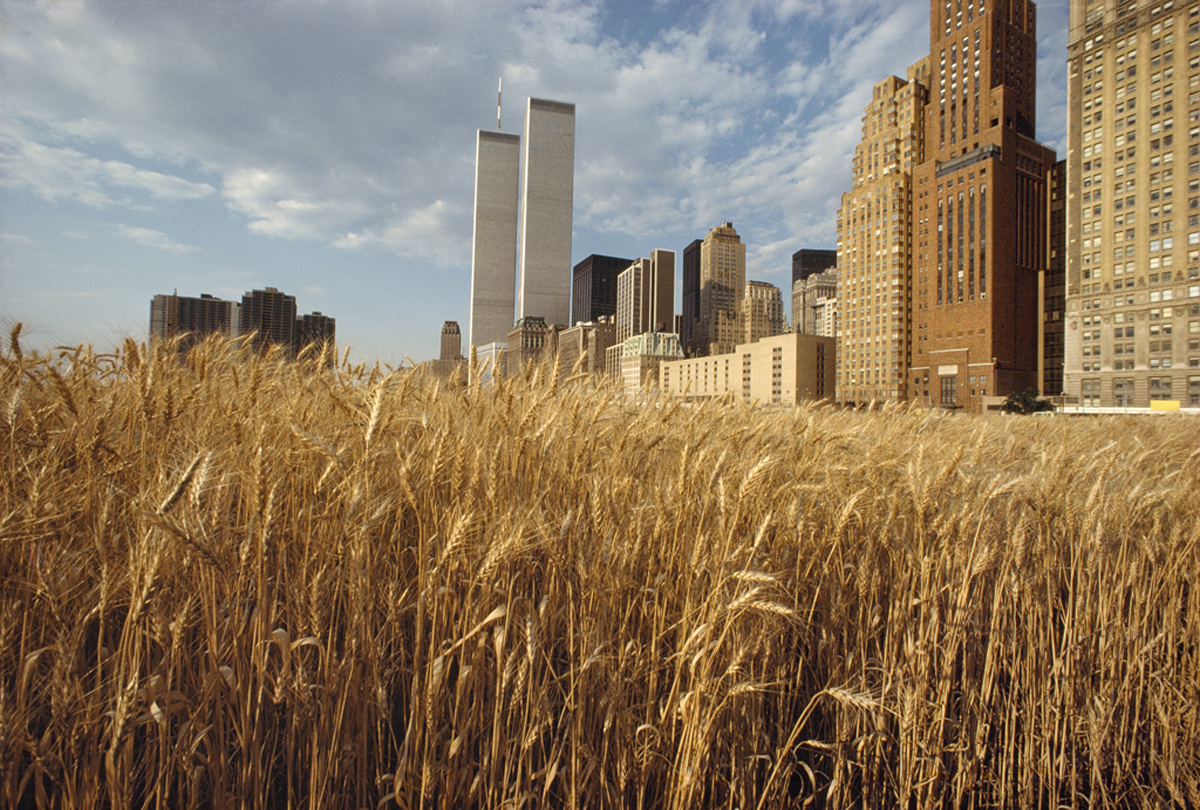Agnes Denes is an artist known for her large-scale environmental works, and one of her most iconic creations is the Wheatfield – A Confrontation. This project was created in the summer of 1982 in Battery Park City, Manhattan, on a two-acre landfill site that was originally meant for the construction of a high-rise office building.
Denes transformed the barren, unused land into a flourishing field of golden wheat, which stood in stark contrast to the urban landscape that surrounded it.

The idea behind Wheatfield was to raise awareness about the impact of human development on the environment, particularly on land use and agriculture. Denes aimed to remind people of the origins of civilization, which began with the cultivation of crops and the development of agriculture. She believed that in modern times, we have lost touch with the land and forgotten the importance of agriculture in sustaining human life.
The process of creating the Wheatfield was a massive undertaking that involved a team of volunteers, including farmers, gardeners, and students. The team cleared the landfill site, tilled the soil, and planted the wheat by hand. They also set up an irrigation system to ensure that the crop received enough water. Over the course of several months, the wheat grew to a height of over seven feet and produced a yield of over 1,000 pounds of grain.
The Wheatfield project was not without its challenges. Denes faced criticism from some who saw the project as a waste of time and resources. Others saw it as a political statement against the development of the area, which was part of a larger urban renewal project. Despite these challenges, Denes persisted, and the Wheatfield became a symbol of environmental activism and a celebration of the power of nature to thrive in even the most inhospitable environments.
The legacy of the Wheatfield project lives on to this day. It inspired a generation of environmental artists and activists who continue to push for sustainable land use and the protection of natural resources. Denes herself went on to create other large-scale works, including Tree Mountain – A Living Time Capsule, which involved planting 11,000 trees on a man-made hill in Finland.
Agnes Denes’s Wheatfield – A Confrontation was a groundbreaking work of art that challenged our perception of the relationship between humans and the environment. It served as a powerful reminder of the importance of agriculture and the impact of human development on the land. Today, it continues to inspire and educate us about the need to be mindful of our impact on the environment and to work towards a more sustainable future.
All images in this article are courtesy of Agnes Denes.










